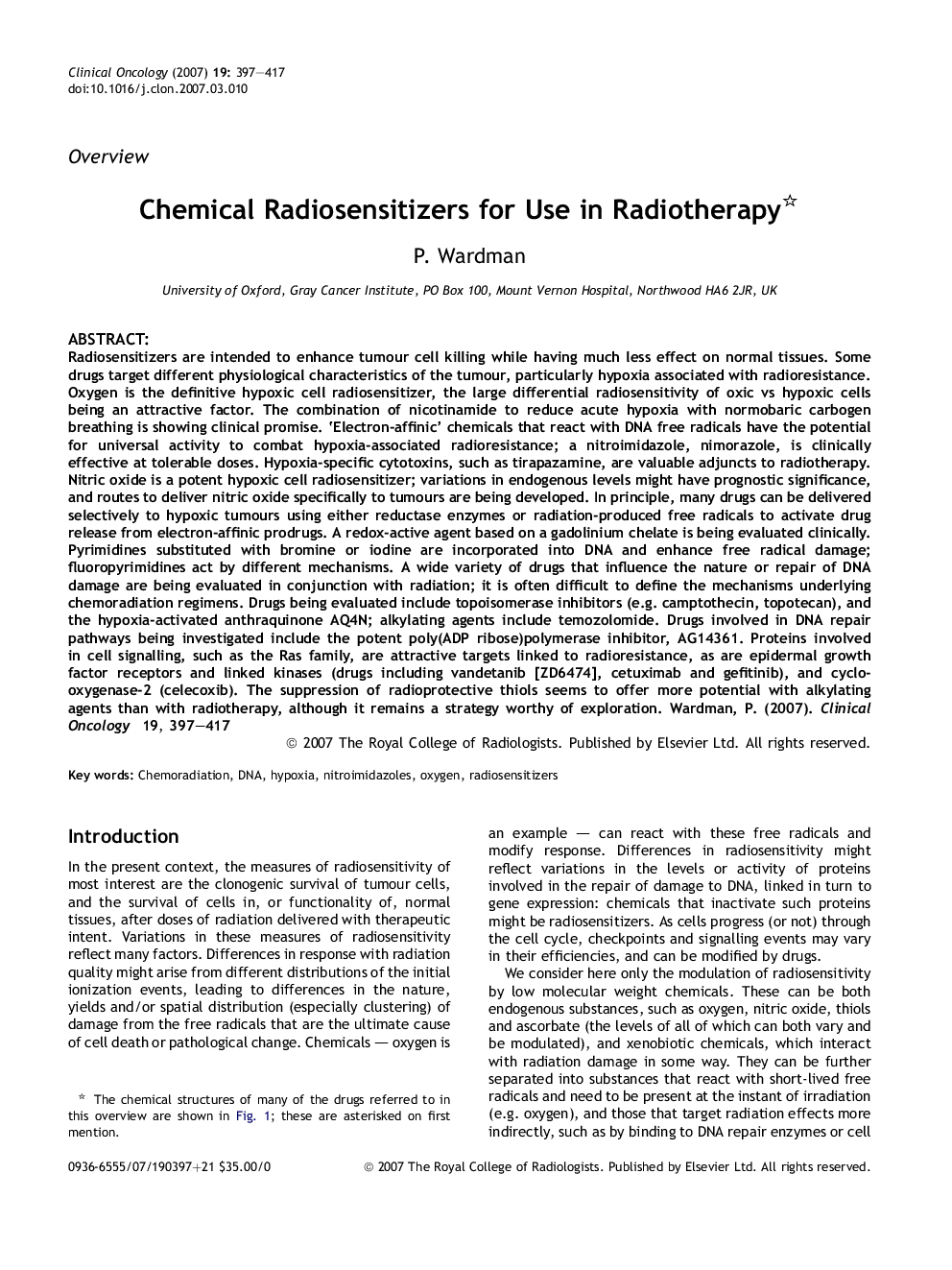| Article ID | Journal | Published Year | Pages | File Type |
|---|---|---|---|---|
| 5700114 | Clinical Oncology | 2007 | 21 Pages |
Abstract
Radiosensitizers are intended to enhance tumour cell killing while having much less effect on normal tissues. Some drugs target different physiological characteristics of the tumour, particularly hypoxia associated with radioresistance. Oxygen is the definitive hypoxic cell radiosensitizer, the large differential radiosensitivity of oxic vs hypoxic cells being an attractive factor. The combination of nicotinamide to reduce acute hypoxia with normobaric carbogen breathing is showing clinical promise. 'Electron-affinic' chemicals that react with DNA free radicals have the potential for universal activity to combat hypoxia-associated radioresistance; a nitroimidazole, nimorazole, is clinically effective at tolerable doses. Hypoxia-specific cytotoxins, such as tirapazamine, are valuable adjuncts to radiotherapy. Nitric oxide is a potent hypoxic cell radiosensitizer; variations in endogenous levels might have prognostic significance, and routes to deliver nitric oxide specifically to tumours are being developed. In principle, many drugs can be delivered selectively to hypoxic tumours using either reductase enzymes or radiation-produced free radicals to activate drug release from electron-affinic prodrugs. A redox-active agent based on a gadolinium chelate is being evaluated clinically. Pyrimidines substituted with bromine or iodine are incorporated into DNA and enhance free radical damage; fluoropyrimidines act by different mechanisms. A wide variety of drugs that influence the nature or repair of DNA damage are being evaluated in conjunction with radiation; it is often difficult to define the mechanisms underlying chemoradiation regimens. Drugs being evaluated include topoisomerase inhibitors (e.g. camptothecin, topotecan), and the hypoxia-activated anthraquinone AQ4N; alkylating agents include temozolomide. Drugs involved in DNA repair pathways being investigated include the potent poly(ADP ribose)polymerase inhibitor, AG14361. Proteins involved in cell signalling, such as the Ras family, are attractive targets linked to radioresistance, as are epidermal growth factor receptors and linked kinases (drugs including vandetanib [ZD6474], cetuximab and gefitinib), and cyclooxygenase-2 (celecoxib). The suppression of radioprotective thiols seems to offer more potential with alkylating agents than with radiotherapy, although it remains a strategy worthy of exploration.
Related Topics
Health Sciences
Medicine and Dentistry
Oncology
Authors
P. Wardman,
